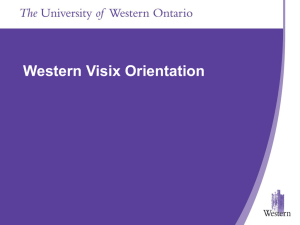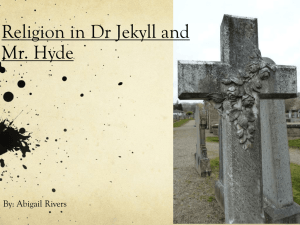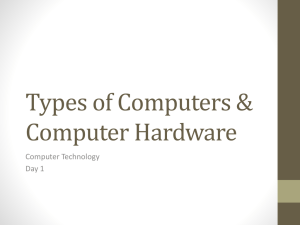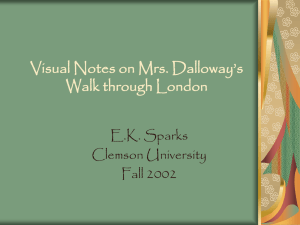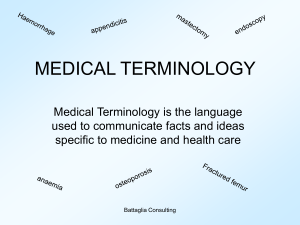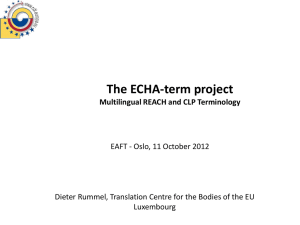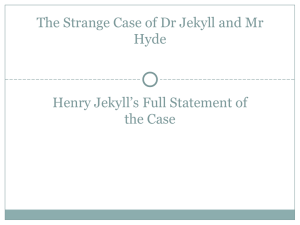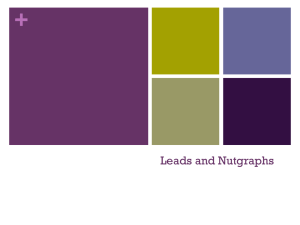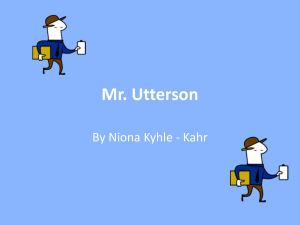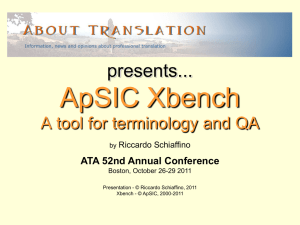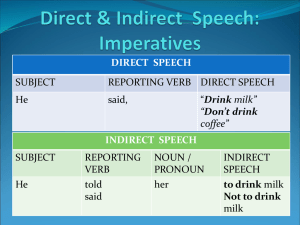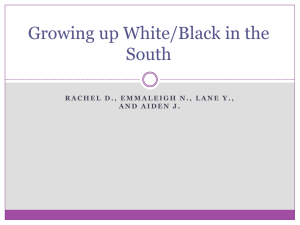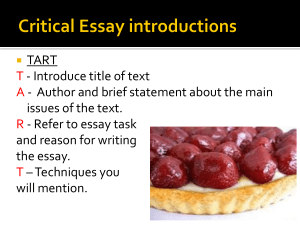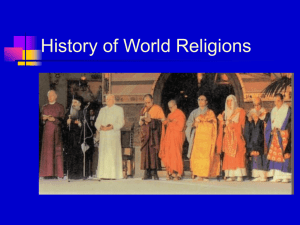Terminology and concepts
advertisement
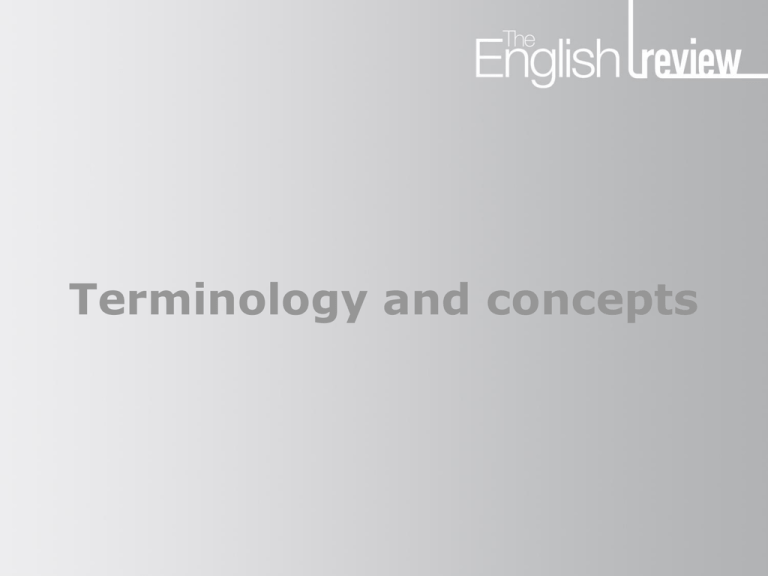
Terminology and concepts Terminology and concepts Terminology and concepts Using terminology and concepts correctly helps you to articulate your responses to literary texts: • in detail • with precision Terminology and concepts Concept A concept is simply an idea, which might involve anything from knowing about a literary movement to applying a critical approach. Examples: • A period or movement such as Romanticism or modernism. • A critical approach, such as feminism or Freudianism. Terminology and concepts Using a concept Freudian terms, such as ego and id, help to explore Dr Jekyll’s idea in The Strange Case of Dr Jekyll and Mr Hyde that ‘man is not truly one, but truly two’. Jekyll, the respectable physician, might be understood as the ego — the reasonable part of the personality that is presented to the world; Hyde, the brutish killer, might be understood as the id — the passionate, pleasure-seeking part of the personality that is usually hidden from public view. Terminology and concepts Using a concept: the double In Gothic fiction, one character is often paired with a sinister double (sometimes called a doppelgänger). Think of Jekyll and Hyde or of Frankenstein and his creature. A double can also be one who shares another character’s values and some of their characteristics: in this way, Septimus might be seen as the double of Clarissa in Mrs Dalloway. Terminology and concepts Symbol A symbol stands for much more than its literal meaning. For example, Big Ben is literally the bell inside the clock tower near the Houses of Parliament. In Mrs Dalloway it comes to symbolise time and its oppressive, linear nature. Terminology and concepts Phallic symbol A phallic symbol is a sexualised representation of masculinity — male potency, power or domination — usually by means of an image resembling the male sexual organ. For example, in Mrs Dalloway Big Ben comes to represent a relentlessly linear and oppressive construction of time. Compare this to the gentler chimes of St Margaret’s and to the freer way in which Woolf’s narrative moves fluidly back and forth in time. Terminology and concepts Free indirect speech (1) When the narrative point of view shifts from being outside the character to inside the character’s consciousness, rendering their thoughts and feelings directly without using inverted commas, a writer is said to use free indirect speech. (This is also known as free indirect style or free indirect discourse.) Terminology and concepts Free indirect speech (2) ‘Mrs. Dalloway said she would buy the flowers herself. For Lucy had her work cut out for her. The doors would be taken off their hinges; Rumpelmayer’s men were coming. And then, thought Clarissa Dalloway, what a morning — fresh as if issued to children on a beach. What a lark! What a plunge! For so it had always seemed to her, when, with a little squeak of the hinges, which she could hear now, she had burst open the French windows and plunged at Bourton into the open air.’ Terminology and concepts Free indirect speech (3) Sentences like the first — ‘Mrs. Dalloway said she would buy the flowers herself’ — are clearly in third person. The later exclamations — ‘What a lark! What a plunge!’ — are the direct thoughts of the protagonist and are in free indirect speech. The boundaries, however, are not always clear. The second sentence, with its colloquial suggestion that Lucy ‘had her work cut out for her’, sounds like less like the words of a distant narrator and more like the thoughts of the protagonist. Terminology and concepts Free indirect speech — effects The following are some of the effects that you might have noticed being created by the free indirect speech in the previous example: • The story is told economically. • Readers gain a sense of Mrs Dalloway’s character. • The mode of story-telling suits the story (in which thoughts of the past often overwhelm events in the present). Terminology and concepts Final thoughts Buy a high-quality glossary of literary terms such as M. H. Abrams, A Glossary of Literary Terms. The following is an excellent website from an American academic: http://web.cn.edu/kwheeler/lit_terms.html Practise using terminology and concepts, but always focus on using them to explain with precision and to explore how effects shape meaning.
